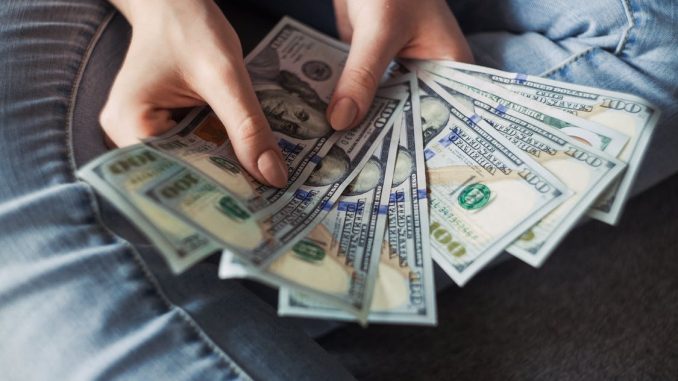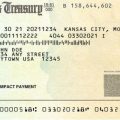
Here are the cities and states considering a gas rebate to help offset the high cost of gas.
Filling your tank has been nothing short of painful in 2022. Average gas prices around the country went above $4 per gallon in March of this year before rising to an eye-watering high of $5.03 in June 2022.
Though prices have declined somewhat in July, reaching a national average of $4.35 as of July 25 according to AAA (opens in new tab), the nearly 60-cent cost reduction per gallon is cold comfort for American motorists. When the cost of filling your tank rivals the price of a steakhouse dinner, it’s tough to cheer for incremental improvements.
Lawmakers have been working to provide some relief. In March, Representatives Mike Thompson of California, John Larson of Connecticut, and Lauren Underwood of Illinois introduced H.R.7143 (opens in new tab), the Gas Rebate Act of 2022, which would provide Americans with a $100 energy rebate (plus another $100 per dependent) each month that national average gas prices exceeded $4 per gallon.
Unfortunately, this legislation hasn’t yet passed the House of Representatives, let alone the Senate, so it’s unlikely that you’ll be receiving $100 per month from Uncle Sam anytime soon.
However, several states and municipalities are making their own gas rebate proposals, along with other forms of relief at the pump. Here’s what you need to know about those proposals:
A fuel rebate would send money directly to taxpayers to offset the high cost of gas. In most cases, government rebates are means-tested, which means the rebate will not be available to high-income earners. Rebates are also often increased if you have dependents.
Here are the states and municipalities that are considering gas rebates:
Drivers in California face the highest gas prices in the nation, paying an average of $5.73 per gallon as of July 25, 2022, according to AAA (opens in new tab).
Governor Gavin Newsom has been pushing for inflation relief at the pump since early 2022 — and has recently included a gas rebate proposal within the state’s 2022-2023 budget, which he signed into law on June 30, 2022.
The gas rebate will provide California taxpayers with up to $1,050. The program is tiered and phases out for high-income taxpayers.
Under the first tier, individuals making $75,000 or less and married couples making $150,000 or less are eligible for a $350 tax rebate per taxpayer, plus an additional $350 for households with at least one dependent. A single parent will receive $700, and a two-parent household will receive $1,050.
The rebate is reduced to $250 per taxpayer for individuals making between $75,000 and $125,000 and couples making $150,000 to $250,000 and reduced again to $200 per taxpayer for individuals with incomes between $125,000 and $250,000 and couples earning between $250,000 and $500,000.
Parents in those income tiers will also receive $250 and $200, respectively, if they have at least one dependent in the household, making the maximum payout (for a two-parent household with at least one dependent) $750 and $600 in each tier.
While there is no specific date for when Californians can expect to receive their gas rebate payments, the Los Angeles Times (opens in new tab) reports that the refunds will probably start going out in October 2022.
In late May, state senate democrats in North Carolina introduced a bill (opens in new tab) that would provide a gas tax rebate of $200. These rebates would go to all North Carolina residents over the age of 18 who have a valid driver’s license.
Though this proposal was put forth two months ago, the bill doesn’t have a clear path to becoming law. The Republican majority in North Carolina’s state Senate has said they will consider the rebate plan (opens in new tab), but expressed a preference for a more permanent tax reduction.
If this rebate bill passes, North Carolinians will receive the money by October 1st, 2022.
To help offset transportation costs, Chicago instituted a program called Chicago Moves (opens in new tab) in April 2022. This program will issue up to 50,000 prepaid gas cards worth $150 each and 100,000 prepaid transit cards worth $50 each to Chicago residents. These prepaid cards will be distributed via lottery, with 75% of the cards sent to residents in areas with higher mobility hardship and the remaining 25% distributed in equal amounts to each ward city-wide.
The program will distribute cards every month from May through September, and you must apply by the first of the month to be considered for that month’s lottery. However, if you aren’t selected to receive a card in the month you applied, you are automatically enrolled in the next month’s lottery.
To be considered eligible, you must be a Chicago resident who is at least 18 years old with a household income at or below 100% of the area median income for Chicago. For a one-person household, that’s $65,300.
Chicago residents can apply for the lottery online (opens in new tab), at any Chicago public library, or by mail (opens in new tab). Applying doesn’t guarantee that you will receive a prepaid card.
Even if your state or municipality isn’t offering a gas rebate, you may still be able to save money at the pump through a tax holiday. In late June, President Biden called for a three-month federal gas tax holiday (opens in new tab). Currently, the federal government levies a tax of 18 cents per gallon of gas and 24 cents per gallon of diesel and Biden’s proposal would temporarily halt those taxes at the pump.
Tax holidays can help reduce the price at the pump, but don’t expect a direct reduction in the amount you pay per gallon. That’s because federal and state taxes are paid on wholesale prices and aren’t necessarily passed directly to the consumer.
While Congress hasn’t taken up Biden’s proposal for a national gas tax holiday, several individual states have paused state taxes on gas. These states include:
Not all drivers will see a gas rebate or tax holiday — but all drivers can still find ways to save money at the pump.
Telecommuting, carpooling, batching your errands together, and walking, biking or using mass transit can all help reduce your fuel consumption and make your trips to the gas station fewer and farther between.
Slowing down on the highway can also lead to significant savings, as every 5 miles per hour you drive over 60 mph costs you about 15 cents per gallon (opens in new tab).
Finally, taking an afternoon to clean your car and handle some routine maintenance can ensure your car runs as efficiently as possible.
Whether you can expect a rebate, a tax holiday, or no government help with gas prices, you have options for reducing your costs at the pump.
Making savvy commuting and driving decisions is the best long-term strategy for saving money on gas.










Leave a Reply